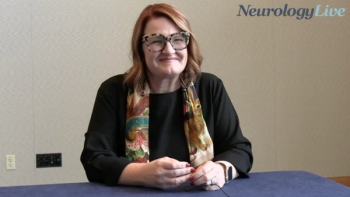
Anti-Inflammatory Effects of NT-0796 Warrant Future Studies in Parkinson Disease, Neurodegeneration
Key Takeaways
- NT-0796 reduced systemic inflammatory markers and neuroinflammation in PD patients, normalizing cytokine levels to healthy volunteer ranges.
- The study demonstrated robust CNS penetration of NT-0796, achieving significant microglial target coverage.
A new study reveals NT-0796's potential to reduce neuroinflammation in Parkinson's disease, paving the way for future treatments.
In a phase 1b, open-label study of healthy volunteers (HV) and patients with Parkinson disease (PD), treatment with NT-0796 (NodThera), a small molecule NLRP3 inflammasome inhibitor, led to reductions in several systemic inflammatory markers and neuroinflammation, further supporting the drug’s development. Future studies are currently planned to further strengthen the evidence supporting the disease-modifying potential of this agent in neurodegenerative disorders like PD.1
A total of 4 elderly HVs (Cohort 1) and 10 patients with PD (Cohort 2) received 150 mg open-label NT-0796 every 12 hours for either 7 or 28 days, respectively. Coming into the study, the PD cohort had a mean age of 63.6 years (range, 53-73), had been diagnosed with the disease for a mean of 6.2 years (range, 0-20 years), and had modified Hoehn and Yahr stages at baseline from Stage 1 to Stage 2.5.
At baseline, patients with PD demonstrated elevated CSF IL-1β (61.9 [±12.2 fg/mL]) compared with elderly HV, where only one subject had a detectable level (32.2 fg/mL). NT-0796 lowered IL-1β to 27.4 [±11.0] fg/mL by day 7 (P = 0.0195), which was sustained at day 28 (34.2 [±8.7 fg/mL]), normalizing to HV ranges. Similarly, elevated CCL2 in PD (632.7 [±85.6] pg/mL vs 558.8 [±27.3] pg/mL in HV) was significantly reduced to 505.1 [±40.9] pg/mL at day 28 (P = 0.0195). IL-6, comparable at baseline, decreased to 1.7 [±0.3] pg/mL at day 28 (P = 0.0312). IL-8, elevated in PD at baseline (52.9 [±7.0] pg/mL vs 45.9 [±5.4] pg/mL), was normalized by day 7 and maintained to day 28. CXCL1, not elevated at baseline, was consistently lowered in patients with PD throughout treatment.
"Overall, our data imply that in this small cohort of PD patients, at variable stages of disease (0–20 years since diagnosis), certain markers of systemic and central inflammation are elevated," lead author Nick Clarke, PhD, Chief Development Officer at NodThera and colleagues, wrote. "Furthermore, the reductions in CSF IL-1β or plasma free IL-18 in response to NT-0796 treatment indicate that NLRP3 is active in both compartments during the course of PD."
Other findings supported a broader anti-inflammatory effect of NT-0796. While IL-18 and TNFα were unchanged, exploratory biomarkers tied to microglial activity and axonal integrity showed reductions in most subjects. By day 28, 5 of 8 participants had at least 10% decreases in both NfL (−10.1% to −19.7%) and sTREM2 (−12.6% to −23.4%). Overall, NT-0796 rapidly normalized pro-inflammatory cytokines and chemokines to HV ranges and sustained suppression over four weeks, while also lowering markers of neuroinflammation and axonal injury in a subset of participants. Study authors concluded that these responses highlight NT-0796’s potential to modulate central inflammation and clinically relevant neuroimmune pathways in PD.
READ MORE:
In terms of pharmacokinetics (PK), plasma concentrations of the active metabolite NDT-19795 peaked at 3h post-dose and declined gradually, while CSF levels were quantifiable, showing a 2-fold CSF/brain Cmax and area under the curve (AUC) in patients with PD vs HVs. Using a 13-fold CSF-to-brain correction, estimated brain concentrations of NDT-19795 reached 143–313 nM (unbound), exceeding the IC50 values for both peripheral (56 nM) and central (91 nM) IL-1β inhibition. These findings demonstrated robust CNS penetration of NDT-19795, achieving ~70% predicted microglial target coverage.
For safety, NT-0796 was considered safe and well tolerated, with treatment-emergent adverse events (TEAEs) that were mostly transient and deemed unrelated to the active agent. Patients mainly experienced TEAEs such as headache, nausea, back/muscle pain, pre-syncope, dizziness, myalgia, and constipation. There were no serious AEs observed, and one patient discontinued because of abnormalities in liver function tests, which was unrelated to NT-0796.
The study was limited by the fact that it was phase 1b with a small sample size, an open-label design, and short duration of treatment; however, the study authors were encouraged by the results, noting that future blinded, placebo-controlled trials are needed. NT-0796 is currently being evaluated as a potential treatment for patients with obesity, with a recently launched phase 2 trial dubbed RESOLVE-1 (NCT07055516)).
RESOLVE-1, a randomized, placebo-controlled trial, will include 160 patients with obesity, with or without type 2 diabetes, who will be randomized to either 3 treatment groups (twice daily NT-0796, once-daily NT-0796, and placebo) for a 24-week period. The trial will primarily assess change in body weight, but also other secondary outcomes such as body composition, metabolic biomarkers, and HbA1c levels. Headline data from the study are anticipated in Q2 2026.
REFERENCES
1. Clarke N, Thornton P, Reader V, et al. Anti-Neuroinflammatory and Anti-Inflammatory Effects of the NLRP3 Inhibitor NT-0796 in Subjects with Parkinson's Disease. Move Disord. Published online August 12, 2025. doi:10.1002/mds.30307.
2. NodThera Charts Obesity Future with First Patients Dosed in Phase 2 RESOLVE-1 Trial of Oral NLRP3 Inflammasome Inhibitor NT-0796. NodThera. June 4, 2025. Accessed August 20, 2025. https://www.nodthera.com/news/nodthera-charts-obesity-future-with-first-patients-dosed/
Newsletter
Keep your finger on the pulse of neurology—subscribe to NeurologyLive for expert interviews, new data, and breakthrough treatment updates.


































